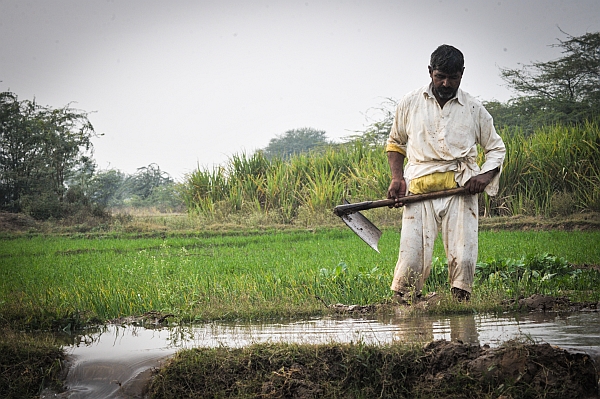New research suggests that droughts in Pakistan are cyclical
The vast farmlands of Pakistan are sustained by the Indus Basin Irrigation System; the largest contiguous canal irrigation system in the world. It serves 45 million acres (approximately 18.2 million hectares) and produces cereals, fruits, vegetables, sugarcane and cotton in abundance for local use as well as for export.

The canal system may be extensive, but that doesn’t prevent many parts of Pakistan experiencing periodic water shortages. In fact, with a population of 195 million people, the country faces growing water scarcity. Population growth, urbanization, industrialization and agricultural development are rapidly increasing pressure on the country’s land, water and energy resources.
These issues, and possible responses to them, are explored in a special edition of the journal, Water International, entitled Water for food security: Challenges for Pakistan, edited by Claudia Ringler, International Food Policy Research Institute (IFPRI), and Arif Anwar, International Water Management Institute (IWMI).
As the guest editors point out in their introduction, Pakistan is reaching a watershed. It needs to act now to stave off future water crises. Particularly challenging are the continued governance and equity problems in irrigation, growing energy shortages and climate change impacts. Equally alarming are severe droughts that the country continues to experience. These often have far-reaching economic impacts; still felt years later.
Drought? No doubt
In the past, droughts have often caught policymakers off guard. So, how can one prepare for such fundamentally erratic events? A new study, included in this special edition of the journal, and undertaken by IFPRI under the Pakistan Strategy Support program, suggests that Pakistan’s droughts are cyclical and thus could be better managed.
The study investigated the spatiotemporal variability of drought incidence using gridded precipitation data. “We found that drought incidence in Pakistan follow a 16-year cycle,” says Claudia Ringler, IFPRI. “Each cycle includes a very drought-intensive period that may last for several years. Three such drought-intensive periods were identified: the late 1960s to early 1970s, the middle 1980s and the late 1990s to early 2000s.”
The results also showed that droughts seem to occur simultaneously in central and southern Pakistan, thus affecting the key agricultural areas. Under such circumstances, the Indus River—whose flows are mostly generated outside the country—is the only lifeline for the water economy in the country. Whether there is a connection between water use in the upper parts of the Indus River Basin and drought occurrence in Pakistan, is a question the scientists suggest for further research.
Preparing for the worst
If droughts occur in a 16-year cycle, and the last ended around the millennium, then the next one might be uncomfortably close. Undoubtedly, these results pose a great challenge for water management, especially in a country where water resources are fully exploited for productive uses. “Ninety-percent of all food produced is derived from irrigated agriculture and the key agricultural areas are also those affected by droughts,” says Arif Anwar, IWMI.
“Our results may contribute to the need for well-coordinated water resources planning and drought preparedness. Also, effective and efficient emergency responses during drought events need to be in place,” concludes Ringler.
[hr top=”no”/]
Article:
Droughts in Pakistan: A spatiotemporal variability analysis using the Standardized Precipitation Index
Xie, H.; Ringler, C.; Zhu, T.; Waqas, A. 2013. Droughts in Pakistan: A spatiotemporal variability analysis using the Standardized Precipitation Index. Water International 38(5): 620-631.
In:
Water International, Volume 38, Issue 5, 2013
Special issue: Water for food security: Challenges for Pakistan
[hr top=”yes”/]
About the author:
Anna Deinhard is a Communications Fellow at the International Water Management Institute (IWMI).

